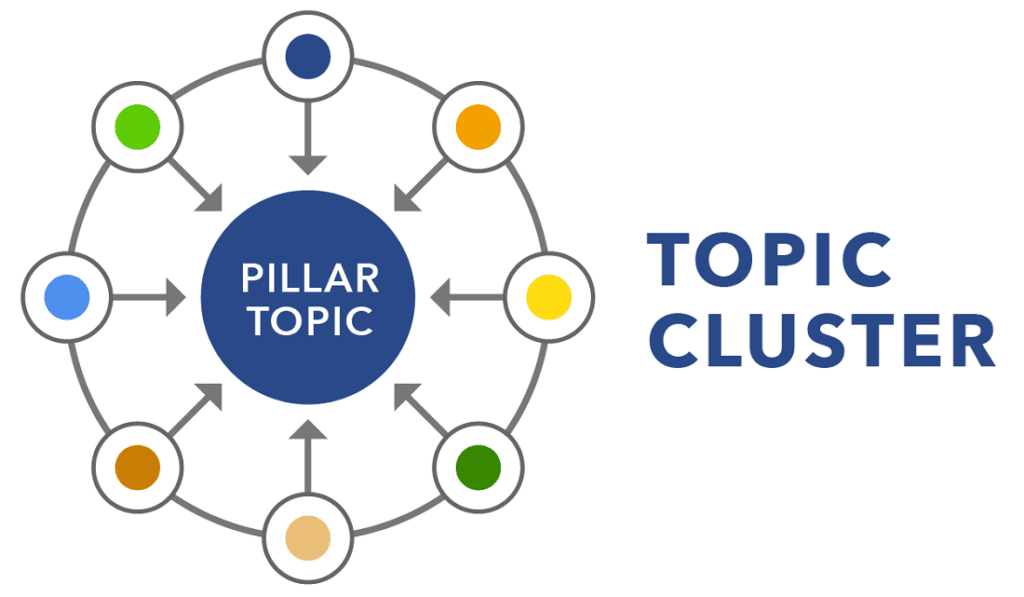How to Create Topic Clusters for SEO
In today’s digital world, SEO has become an essential component of any successful online marketing strategy. One of the most effective ways to improve your website’s search engine rankings is through the use of topic clusters.
A topic cluster is a group of subtopics that are related to a central topic and linked to a pillar page. In this article, we will guide you through the process of creating effective topic clusters to improve your website’s SEO.
The importance of keyword research in topic clusters
Keyword research is the foundation of any successful SEO strategy. It involves identifying the keywords and phrases that your target audience uses to search for your products or services.
Keyword research is crucial when creating a topic cluster as it helps you identify the central topic and the subtopics that are related to it.
To conduct keyword research, you can use tools such as Google Keyword Planner or SEMrush. These tools will help you identify the search volume, competition, and related keywords for each keyword that you are targeting.
Once you have identified the keywords, you can use them to create your pillar page and subtopics.
How to create a pillar page for your topic clusters
The pillar page is the central hub of your topic cluster. It is a comprehensive guide that covers all aspects of the central topic, providing an in-depth overview of the subject. The pillar page should be well-written, informative, and engaging, providing value to your target audience.
To create a pillar page, you should start by conducting research on the central topic, and compiling all relevant information into a comprehensive guide.
The guide should be broken down into sections, with each section covering a specific aspect of the topic. You should also include visual aids such as images, infographics, and videos to make the page more engaging.
The pillar page should be optimized for SEO, including the targeted keywords in the title, headings, and content. You should also include internal links to the subtopics, as this will help search engines understand the relationship between the central topic and the subtopics.
Identifying subtopics for your topic clusters
Once you have created your pillar page, the next step is to identify the subtopics that are related to the central topic.
Subtopics are specific aspects of the central topic that provide more in-depth information on a particular subject. Subtopics should be relevant to the central topic and provide value to your target audience.
To identify subtopics, you can use tools such as Google Search, Google Autocomplete, and Google Trends. These tools will help you identify the most popular and relevant subtopics related to the central topic. You can also conduct competitor research to identify the subtopics that your competitors are targeting.

topic clusters
Creating content for your subtopics
Once you have identified the subtopics, the next step is to create content for each subtopic. The content should be informative, engaging, and provide value to your target audience. You can use different types of content such as blog posts, videos, infographics, and podcasts to create content for your subtopics.
When creating content, you should optimize it for SEO, including the targeted keywords in the title, headings, and content. You should also include internal links to the pillar page and other subtopics, as this will help search engines understand the relationship between the subtopics.
Linking your subtopics to your pillar page
The final step in creating an effective topic cluster is linking your subtopics to your pillar page. Internal linking is crucial in SEO as it helps search engines understand the structure of your website and the relationship between the pages.
When linking your subtopics to your pillar page, you should use descriptive anchor text that includes the targeted keywords. You should also include internal links between the subtopics to help search engines understand the relationship between the subtopics.
Common mistakes to avoid when creating topic clusters
Creating an effective topic cluster requires careful planning and execution. Here are some common mistakes to avoid when creating topic clusters:
- Not conducting proper keyword research
- Creating subtopics that are not relevant to the central topic
- Not optimizing content for SEO
- Not including internal links between the subtopics and the pillar page
By avoiding these common mistakes, you can create effective topic clusters that will improve your website’s search engine rankings and drive more traffic to your site.
Contact Us Today!
In conclusion, topic clusters are an essential component of any successful SEO strategy. By creating an effective topic cluster, you can improve your website’s search engine rankings and drive more traffic to your site.
If you need help creating an effective topic cluster, don’t hesitate to contact us today!




